本記事の制作体制
 熊田 貴行
熊田 貴行BECOS執行役員の熊田です。BECOSが掲げる「Made In Japanを作る職人の熱い思いを、お客様へお届けし、笑顔を作る。」というコンセプトのもと、具体的にどのように運営、制作しているのかをご紹介いたします。BECOSにおけるコンテンツ制作ポリシーについて詳しくはこちらをご覧ください。
 熊田 貴行
熊田 貴行BECOS執行役員の熊田です。BECOSが掲げる「Made In Japanを作る職人の熱い思いを、お客様へお届けし、笑顔を作る。」というコンセプトのもと、具体的にどのように運営、制作しているのかをご紹介いたします。BECOSにおけるコンテンツ制作ポリシーについて詳しくはこちらをご覧ください。

外国の方に日本の伝統工芸品をプレゼントする際などに、どのように使うのかやどのような成り立ちで伝統工芸品になっているのかを説明した方がより、魅力が伝わりますよね。BECOSでは、外国人の方へ贈られる際には、必ず簡単な説明書きを同封させていただいております。
今回は、より詳しく伝統工芸品を説明する場合の英語での言い回しなどをカナダ在住で日本の文化や伝統工芸にも詳しいMAMIさんにうかがいました!

こんにちは!できる限りわかりやすい英語で表現しましたので、英語が母国語の国ではない方へも伝わると思いますのでぜひご活用していただければと思います!
古くから伝わる日本の伝統技術を用いて作られた伝統工芸品。
その繊細で洗練された美しさから近年では世界中で注目を集め、2020年の東京オリンピック開催にともない海外の方に説明する機会も増えつつあります。
この記事では、海外の方でもわかりやすいように、ものづくり大国日本がほこる伝統工芸品の特徴と魅力を英語で紹介していきます。
Traditional crafts made by using Japanese traditional techniques have been handed down over the centuries. In recent years, the delicate and refined beauty has attracted worldwide attention. Also, with the coming Tokyo Olympics 2020, there will be more opportunities to introduce our Japanese traditional craft to people overseas. In this article, we will introduce the characteristics of traditional crafts which are made by our craftsmanship, the boast of Japan.
一般的に伝統工芸品とは、手作りであり、かつ日常の生活で使われるものをさします。
時代の流れに合わせた工業化にともない、明確な定義は難しくなっています。
ものづくり文化が古くから続いている日本では、1974年にこの伝統と文化を守るための法律も作られ、
この5つがそろったものを伝統工芸品と呼んでいます。
In general, artifacts which are handmade and used in everyday life are so called “traditional crafts”. Yet, with industrialization, it becomes hard to define what traditional crafts are. In 1974, Japan has established laws to preserve our tradition and culture. In this law, the crafts that meet all five of these requirements are defined as “traditional crafts”:
各地域の色が出る伝統工芸品ですが、その種類はさまざま。
ここではその20種類のカテゴリーを日本語と英語で説明していきます。
There are many variation and subcategories of Japanese traditional crafts. We will introduce the 20 of categories in both Japanese and English.

織物とは、縦横に糸を組み合わせることによって作られた布地のことをさします。
織機(おりき)を使って、経糸(たていと)を張った間に緯糸(よこいと)を通して作っていきます。
この糸の通し方、素材や太さで織物の特徴が作られていきます。
織物は着物だけでなく、家具や日用品など幅広い工芸品に使われています。
Weaving is a fabric made by combining yarn vertically and horizontally. The weaving process is using a method of fabric production with the loom: make it through weft while stretching the warp. The way these weft and warp are threaded, the material, and the thickness creates the characteristics of the weaving. Weaving are used not only in kimonos, but also for a wide range of crafts, including furniture and daily necessities.
| 二風谷アットウシ | Nibutani-attus |
| 奥会津昭和からむし織 | Oku-Aizu Showa Karamushi Textiles |
| 置賜紬 | Oitama Pongee |
| 羽越しな布 | Uetsu Shinafu |
| 結城紬 | Yuki Pongee |
| 伊勢崎絣 | Isesaki Kasuri |
| 桐生織 | Kiryu Textiles |
| 秩父銘仙 | Chichibu Meisen |
| 村山大島紬 | Murayama Oshima Fabrics |
| 本場黄八丈 | Honba Kihachijo Fabrics |
| 多摩織 | Tama Fabrics |
| 塩沢紬 | Shiozawa Pongee |
| 本塩沢 | Shiozawa Fabrics |
| 小千谷縮 | Ojiya Ramie Crepe |
| 小千谷紬 | Ojiya Pongee |
| 十日町絣 | Tokamachi Ikat |
| 十日町明石ちぢみ | Tokamachi Akashi Crepe |
| 牛首紬 | Ushikubi Pongee |
| 信州紬 | Shinshu Pongee |
| 近江上布 | Omi Ramie |
| 西陣織 | Nishijin Textiles |
| 弓浜絣 | Yumihama Ikat |
| 阿波正藍しじら織 | Awa Indigo Cotton |
| 博多織 | Hakata Textiles |
| 久留米絣 | Kurume Ikat |
| 本場大島紬 | Oshima Fabrics |
| 久米島紬 | Kumejima Pongee |
| 宮古上布 | Miyako Fine Ramie |
| 読谷山花織 | Yuntanza Hana-ui Fabrics |
| 読谷山ミンサー | Yuntanza Minsaa |
| 琉球絣 | Ryukyu Ikat |
| 首里織 | Shuri Fabrics |
| 与那国織 | Yonaguni Fabrics |
| 喜如嘉の芭蕉布 | Kijoka Banana Fiber Cloth |
| 八重山ミンサー | Yaeyama Minsaa |
| 八重山上布 | Yaeyama Ramie |
| 知花花織 | Chibana Hanaori |
| 南風原花織 | Haebaru Hana Ori |

染色品とは、字の通り布を染めることによってできたもののことをさします。
染料を織物の繊維に浸けることで色や模様をつけていき、おもに着物や工芸品に使われます。
日本では地域ごとに異なる伝統的な染色方法があり、その鮮やかな色彩や繊細な模様で作られた伝統工芸品は人々の目を楽しませてくれます。
Dyed textiles are made by soaking the dye in the fiber of the textile. Using this method, the color and the pattern are applied to the cloth, and it becomes perfect to use for kimonos and crafts. In Japan, there are different traditional dyeing methods for each region, and these traditional crafts made with its vivid colors and delicate patterns delight people’s eyes.
| 東京染小紋 | Tokyo Fine-Pattern Dyeing |
| 東京手描友禅 | Tokyo Yuzen Dyeing |
| 東京無地染 | Tokyo Plain Dyeing |
| 加賀友禅 | Kaga Yuzen Dyeing |
| 有松絞り | Arimatsu aperture |
| 名古屋友禅 | Nagoya Yuzen |
| 名古屋黒紋付染 | Nagoya Black Dyeing |
| 京鹿の子絞 | Kyoto Kanoko Shibori |
| 京友禅 | Kyoto Yuzen Dyeing |
| 京小紋 | Kyoto Fine-Pattern Dyeing |
| 京黒紋付染 | Kyoto Black Dyeing |
| 琉球びんがた | Ryukyu Bingata Dyeing |

細長い紐状の素材で作られたものを繊維品と呼び、伝統工芸品のなかではくみひもと刺繍があります。
くみひもは美しい見た目だけでなく、強度もそなえた実用性の高い工芸品です。
一方、刺繍は衣服だけでなく額絵や装飾品などにも使われ、アートとしても国内外から注目を集めています。
The one made of elongated string-shaped material is called a textile crafts, and there are two types in traditional crafts: braiding patterns (Kumihimo) and embroidery. Kumihimo is a highly practical craft that looks aesthetic and has strength at the same time. Embroidery, on the other hand, is used not only for clothes but also for frame painting and ornaments, which has attracted attention from Japan and abroad as an art.
| 加賀繍 | Kaga Embroidery |
| 伊賀くみひも | Iga Kumihimo Braids |
| 京繍 | Kyoto Embroidery |
| 京くみひも | Kyoto Kumihimo Braids |

陶磁器とは、土を練り固めた粘土を加熱することで作ったもの全般を指し、「焼き物」「瀬戸物」「唐津物」などとも呼ばれます。
陶器は柔らかく、料理や飲み物が冷めにくい性質をもっており、反対に磁器は硬く、熱しやすく冷めやすいのが特徴です。
In general, pottery and porcelain are made of clay and hardened by heat. It is also called as “pottery (Yakimono)”, “Setomono”, “Karatsumono“, etc. Pottery and porcelain have opposite characteristics; Pottery is soft and keep food and drinks warm, while porcelain is hard and easy to get heated or cooled.
| 大堀相馬焼 | Obori Soma Ware |
| 会津本郷焼 | Aizu Hongo Ware |
| 笠間焼 | Kasama Ware |
| 益子焼 | Mashiko Ware |
| 九谷焼 | Kutani Ware |
| 美濃焼 | Mino Ware |
| 常滑焼 | Tokoname Ware |
| 赤津焼 | Akazu Ware |
| 瀬戸染付焼 | Seto Underglazed Ware |
| 四日市萬古焼 | Yokaichi Banko Ware |
| 伊賀焼 | Iga Ware |
| 越前焼 | Echizen Ware |
| 信楽焼 | Shigaraki Ware |
| 京焼/清水焼 | Kyoto ware |
| 丹波立杭焼 | Tamba Tachikui Ware |
| 出石焼 | Izushi Ware |
| 石見焼 | Iwami Ware |
| 備前焼 | Bizen Ware |
| 萩焼 | Hagi Ware |
| 大谷焼 | Otani Ware |
| 砥部焼 | Tobe Ware |
| 小石原焼 | Koishiwara Ware |
| 上野焼 | Agano ware |
| 伊万里/有田焼 | Arita Ware |
| 唐津焼 | Karatsu Ware |
| 三川内焼 | Mikawachi Ware |
| 波佐見焼 | Hasami Ware |
| 小代焼 | Shodai Ware |
| 天草陶磁器 | Amakusa Pottery and Porcelain |
| 薩摩焼 | Satsuma Ware |
| 壷屋焼 | Tsuboya ware |

漆器とは、木や紙などに漆(東南アジアに生息する「ウルシの木」から取れる樹液を加工したもの)を塗り重ねてつくる工芸品です。
主に味噌汁などのお椀として使われます。
漆を塗ることで、表面に艶を出すことができ見た目にも美しく、丈夫になります。
Lacquerware is a craft made by applying lacquer (processed from the “Urushi tree” that inhabits Southeast Asia) to wood and paper. Lacquer makes a craft’s surface glossy and gives strength. It is mainly used for a miso soup bowl.
| 津軽塗 | Tsugaru Lacquer Ware |
| 秀衝塗 | Hidehira Lacquer Ware |
| 浄法寺塗 | Joboji Lacquer Ware |
| 鳴子漆器 | Naruko Lacquer Ware |
| 川連漆器 | Kawatsura Lacquer Ware |
| 会津塗 | Aizu Lacquer Ware |
| 鎌倉彫 | Kamakura Carved and Lacquered Ware |
| 小田原漆器 | Odawara Lacquer Ware |
| 村上木彫堆朱 | Murakami Carved and Lacquered Ware |
| 新潟漆器 | Niigata Lacquer Ware |
| 木曽漆器 | Kiso Lacquer Ware |
| 高岡漆器 | Takaoka Lacquer Ware |
| 輪島塗 | Wajima Lacquer Ware |
| 山中漆器 | Yamanaka Lacquer Ware |
| 金沢漆器 | Kanazawa Lacquer Ware |
| 飛騨春慶 | Hida Shunkei Lacquer Ware |
| 越前漆器 | Echizen Lacquer Ware |
| 若狭塗 | Wakasa Lacquer |
| 京漆器 | Kyoto Lacquer Ware |
| 紀州漆器 | KIsyu Lacquer Ware |
| 大内塗 | Ouchi Lacquer Ware |
| 香川漆器 | Kagawa Lacquer Ware |
| 琉球漆器 | Ryukyu Lacquer Ware |

国土の約70%が森林となっている日本では、木工品が古くから発達してきました。
南北に伸びる日本列島では地域ごとに異なる木の特徴をうまく生かした工芸品が受け継がれています。
木工品は、木材に職人が加工をほどこしたものを指し、使う年月が長いほど味わいが増す上、実用性にも優れているので家具や彫刻品などに用いられます。
In Japan, where about 70% of the country is forested, the woodwork has developed since ancient times. In the Japanese archipelago, which extends from north to south, crafts that make good use of the different characteristics of trees in each region are passed down. Woodwork refers to the wood processed by craftsmen, and the longer you use it, the more gives an additional charm to it. It is also used for furniture and sculptures because it is excellent in practicality.
| 二風谷イタ | Nibutani Ita |
| 樺細工 | Cherry bark Crafts |
| 大館曲げわっぱ | Odate Bentwood Work |
| 秋田杉樽桶 | Akita Cedar Casket |
| 奥会津編み組細工 | Okuaizu Basketry |
| 江戸指物 | Edo Joinery |
| 箱根寄木細工 | Hakone Wood Mosaic Work |
| 松本家具 | Matsumoto Furniture |
| 南木曽ろくろ細工 | Nagiso potter’s wheel |
| 井波彫刻 | Inami Woodcarving |
| 一位一刀彫 | Ichii Woodcarving |
| 京指物 | Kyoto Joinery |
| 大阪欄間 | Osaka Transoms |
| 大阪唐木指物 | Osaka Fine Cabinetry |
| 大阪金剛簾 | Osaka Kongo Bamboo Blinds |
| 豊岡杞柳細工 | Toyooka Willow Basketry |
| 宮島細工 | Miyajima Woodwork |
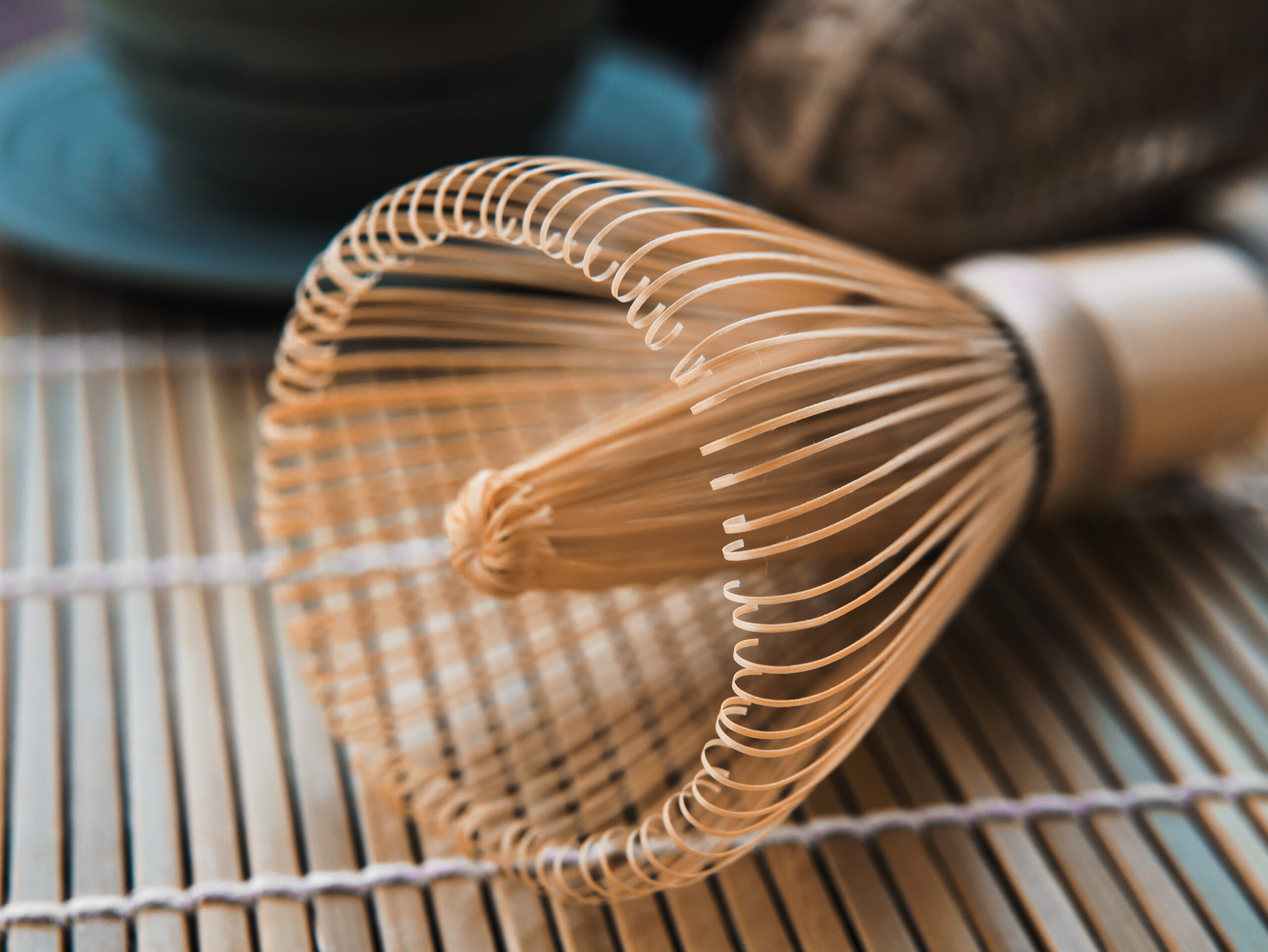
木工品と同様に、竹林が多い日本では、竹も重要な工芸品の材料として使われてきました。
軽くてしなやか、そして丈夫な竹の特性が活かされており、竹細工の技術を使って竹工品が作られます。
竹の繊細かつ強度を備えた性格は、籠や茶道具などに最適です。
Like woodwork, bamboo has been used as an important craft material in Japan where there are many bamboo forests. It is made use of the bamboo’s characteristics of lightness, suppleness, and durableness. The delicate and strong nature of bamboo is ideal for baskets and tea utensils.
| 江戸和竿 | Edo Fishing Rods |
| 駿河竹千筋細工 | Suruga Bamboo Ware |
| 高山茶筌 | Takayama Chasen |
| 紀州へら竿 | Kishu spatula rod |
| 勝山竹細工 | Katsuyama bamboo work |
| 別府竹細工 | Beppu Bamboo Basketry |
| 都城大弓 | Miyakonojo Bows |

伝統工芸品の箪笥は和箪笥とも呼ばれ、日本の伝統工芸の技法が詰まった収納家具です。
発祥は江戸時代前半と言われており、洗練された素材、構造、塗り、そして金具がそろってできあがります。
当時は富裕層しか持てないものであり、現在でも高価なものだと100万円以上するものも珍しくありません。
The Japanese traditional chest is an item of storage furniture which have originated in the first half of the Edo period. It is made with full of Japanese traditional craft making techniques and consists of sophisticated materials, structures, paints, and hardware. At the time of Edo period, the Japanese chest was only the wealthy could have, and even today, it is not uncommon for it to cost more than one million yen (91,000 USD).
| 岩谷堂箪笥 | Iwayado Chests |
| 春日部桐箪笥 | Kasukabe Paulownia Chests |
| 加茂桐箪笥 | Kamo Paulowina Chests |
| 名古屋桐箪笥 | Nagoya Paulownia Chests |
| 越前箪笥 | Echizen Tansu |
| 大阪泉州桐箪笥 | Osaka Senshu Paulownia Chests |
| 紀州箪笥 | Kishu Paulownia Chests |
| 仙台箪笥 | Sendai Tansu |

金や銀、銅、錫、鉄などを加工して作られた工芸品を金工品と呼びます。
日本では5世紀ごろから製鉄技術が発達し、おもに鋳金(原型を作ったうえで、その原型からとった型に金属を流し込んで成型する技法)、鍛金(金属を叩いて加工する技法)、彫金(工具を用いて金属の成型、模様彫りをする技法)などがあります。
Crafts made by processing gold, silver, copper, tin, iron, etc. are called metalwork. In Japan, steelmaking technology has developed since around the 5th century, and there are mainly three types: casting metals (a technique for pouring metal into a mold to taken from the prototype), forging (a technique for processing by striking metal), and carving (a technique for molding metal using tools and forming patterns).
| 南部鉄器 | Nambu Cast Ironwork |
| 山形鋳物 | Yamagata Metal Casting |
| 東京銀器 | Tokyo Silversmithery |
| 千葉工匠具 | Chiba Artisan Tools |
| 燕鎚起銅器 | Tsubame Beaten Copperware |
| 高岡銅器 | Takaoka Bronze Casting |
| 大阪浪華錫器 | Osaka Naniwa Pewter Ware |
| 肥後象がん | Higo Inlay |
| 東京アンチモニー工芸品 | Tokyo Antimony Craft |
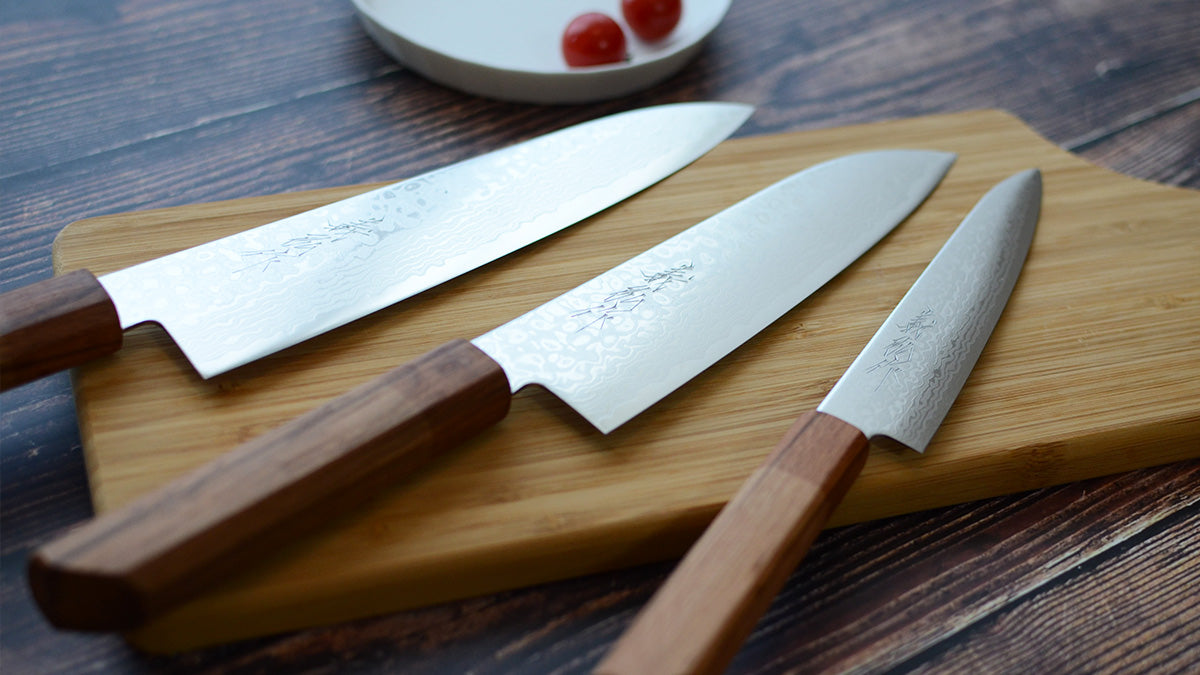
調理器具や農具、武器など、刃物は様々な場面で用いられる工芸品です。
伝統的工芸品に登録されているのは打刃物と呼ばれるもので、精錬された鉄をさらに叩いて作ったものを指します。
その切れ味は世界で認められており、包丁を求めて日本を訪れるプロの料理人も少なくありません。
Cutlery is a craft not only used in cooking utensils, but also agricultural tools and weapons. Those which are recognized in traditional crafts are called cutting knives (Daha mono). By striking the refined iron, the knife gets more sharpen. Many professional chefs around the world visit Japan just for a kitchen knife.
| 越後与板打刃物 | Echigo Yoita Forged Blades |
| 越後三条打刃物 | Echigo Sanjo Uchi Hamono |
| 信州打刃物 | Shinshu Forged Blades |
| 越前打刃物 | Echizen Forged Blades |
| 堺打刃物 | Sakai Forged Blades |
| 播州三木打刃物 | Banshu Miki Forged Blades |
| 土佐打刃物 | Tosa Forged Blades |

仏教の仏様をまつるための祭壇、そしてその儀式に必要な日用品や装飾品のことを指します。
日本では仏教伝来とともに発展してきました。
各宗派ごとに様式が異なるため大量生産することはできず、製作には高い品質と技術が求められます。
特に昔から仏教の中心地として栄えてきた京都の「京仏具」は最高級品とされています。
Butsudan is the altar for enshrining the Buddha, and Butsugu is the daily necessities and ornaments necessary for the ritual. In Japan, it has developed with the transmission of Buddhism. Since each sect has a different style and production requires high quality and techniques, the amount of production is limited. In particular, Kyoto’s Kyobutsu, which has long flourished as the center of Buddhism, is well-known as the finest product.
| 山形仏壇 | Yamagata Household Buddhist Altars |
| 新潟仏壇 | Nigata Household Buddhist Altars |
| 長岡仏壇 | Nagaoka Household Buddhist Altars |
| 三条仏壇 | Sanjo Household Buddhist Altars |
| 飯山仏壇 | Iiyama Household Buddhist Altars |
| 金沢仏壇 | Kanazawa Household Buddhist Altars |
| 七尾仏壇 | Nanao Household Buddhist Altars |
| 名古屋仏壇 | Nagoya Household Buddhist Altars |
| 三河仏壇 | Mikawa Household Buddhist Altars |
| 彦根仏壇 | Hikone Household Buddhist Altars |
| 京仏壇 | Kyoto Household Buddhist Altars |
| 京仏具 | Kyoto Buddhist Paraphernalia |
| 大阪仏壇 | Osaka Household Buddhist Altars |
| 広島仏壇 | Hiroshima Household Buddhist Altars |
| 八女福島仏壇 | Yamefukushima Household Buddhist Altars |
| 川辺仏壇 | Kawanabe Household Buddhist Altars |
| 尾張仏具 | Owari Household Buddhist Altars |
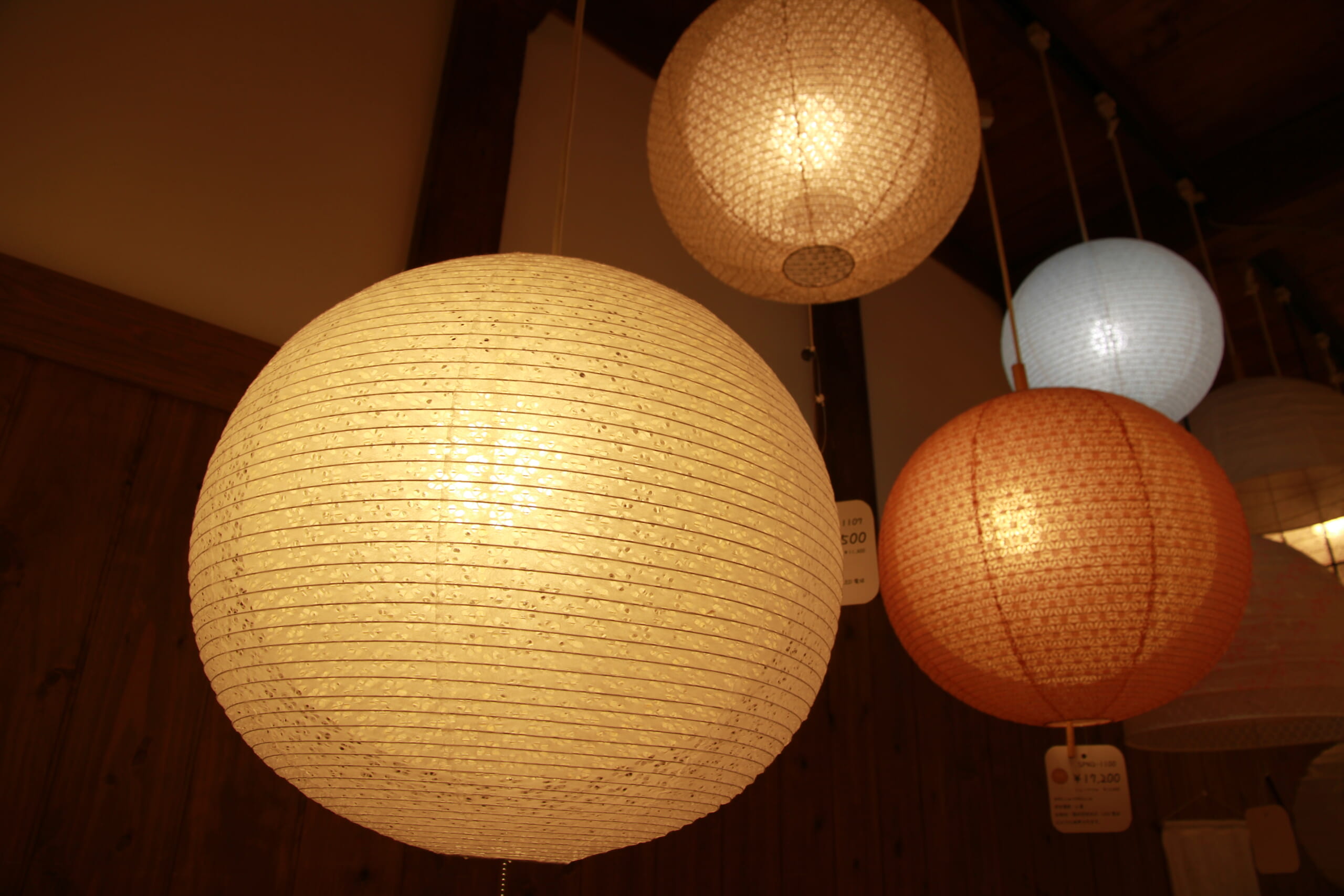
和紙はおもに楮(こうぞ)、三椏(みつまた)、雁皮(がんぴ)などの繊維が長く丈夫なものを原料として作られています。
強度や耐久性も高く、高度な技術が必要とされる伝統工芸品です。
2014年には「石州半紙」「本美濃紙」「細川紙」、3つの和紙がユネスコの無形文化遺産に登録されました。
Japanese paper is mainly made from long and strong fibers such as mulberry (ko-zo), paper bush (mitsumata), and ganpi. It is a traditional craft that has high strength and durability and requires advanced technology. In 2014, three types of washi were registered as UNESCO’s Intangible Cultural Heritage: Sekishu Hanshi, Honmino Paper, and Hosokawa Paper.
| 内山紙 | Uchiyama Paper |
| 越中和紙 | Etchu Paper |
| 美濃和紙 | Mino Paper |
| 越前和紙 | Echizen Paper |
| 因州和紙 | Inshu Paper |
| 石州和紙 | Sekishu Paper |
| 阿波和紙 | Awa Paper |
| 大洲和紙 | Ozu Paper |
| 土佐和紙 | Tosa Paper |
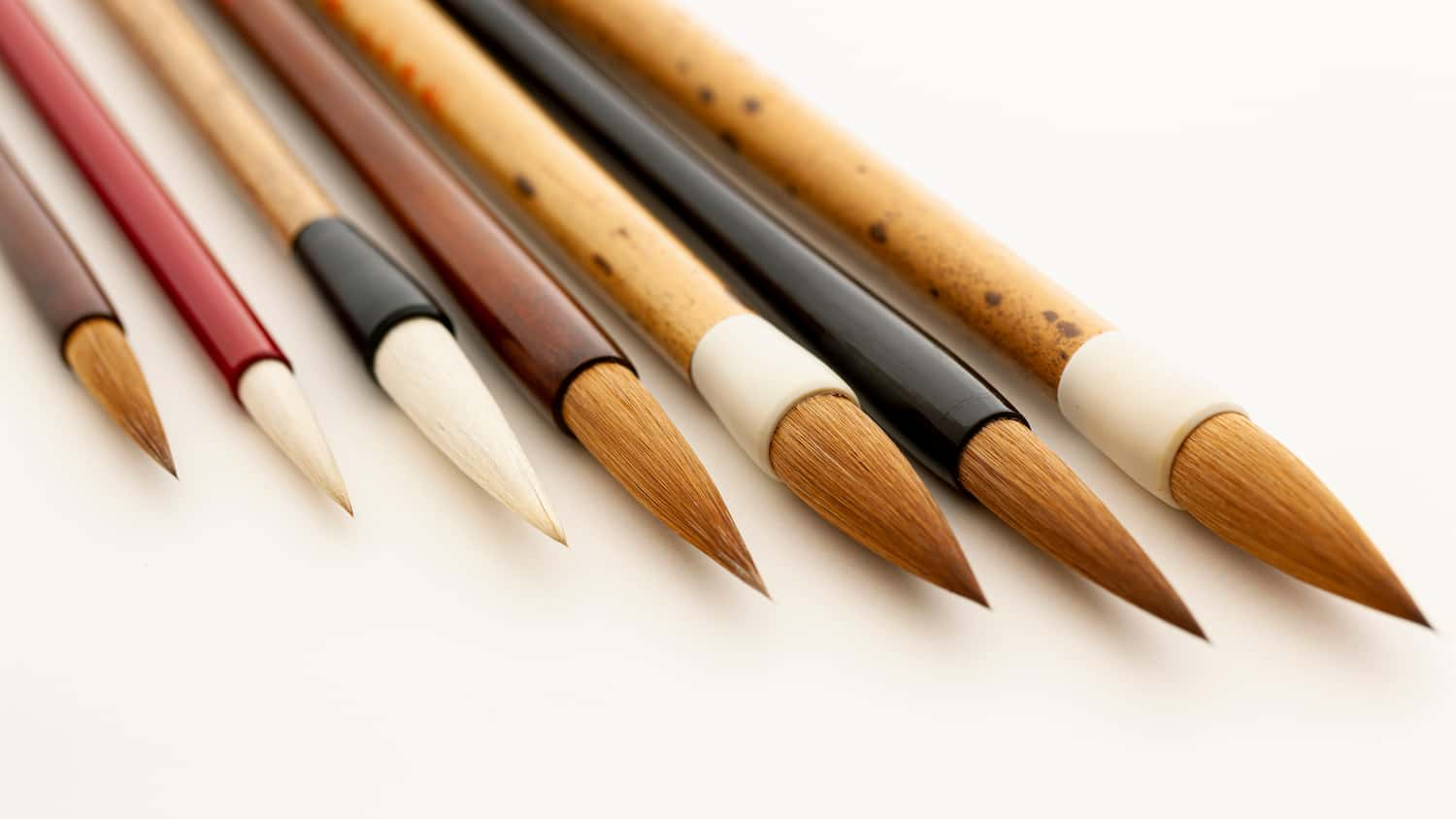
文具は筆や硯(すずり、墨を水で磨りおろすための文房具)、そろばん(珠を移動させて計算する道具)など、日常生活に欠かせない工芸品です。
特に筆の製作には熟練された技術が必要とされ、洗練された日本産の筆は書筆だけではなく画毛や化粧筆としても高い人気があります。
Stationery is an indispensable handicraft to daily life, such as brushes, inkstones (stationery for rubbing and polishing ink with water) and abacus (a tool for calculating by moving beads). In particular, the production of brushes requires skilled techniques, and sophisticated Japanese brushes are highly popular not only as writing brushes but also as drawing and makeup brushes.
| 雄勝硯 | Ogatsu Inkstones |
| 豊橋筆 | Toyohashi Brushes |
| 鈴鹿墨 | Suzuka Sumi Ink Sticks |
| 播州そろばん | Banshu Abacus |
| 奈良筆 | Nara Brushes |
| 雲州そろばん | Unshu Abacus |
| 熊野筆 | Kumano’s brush |
| 川尻筆 | Kawajiri Brushes |
| 赤間硯 | Akama Inkstones |
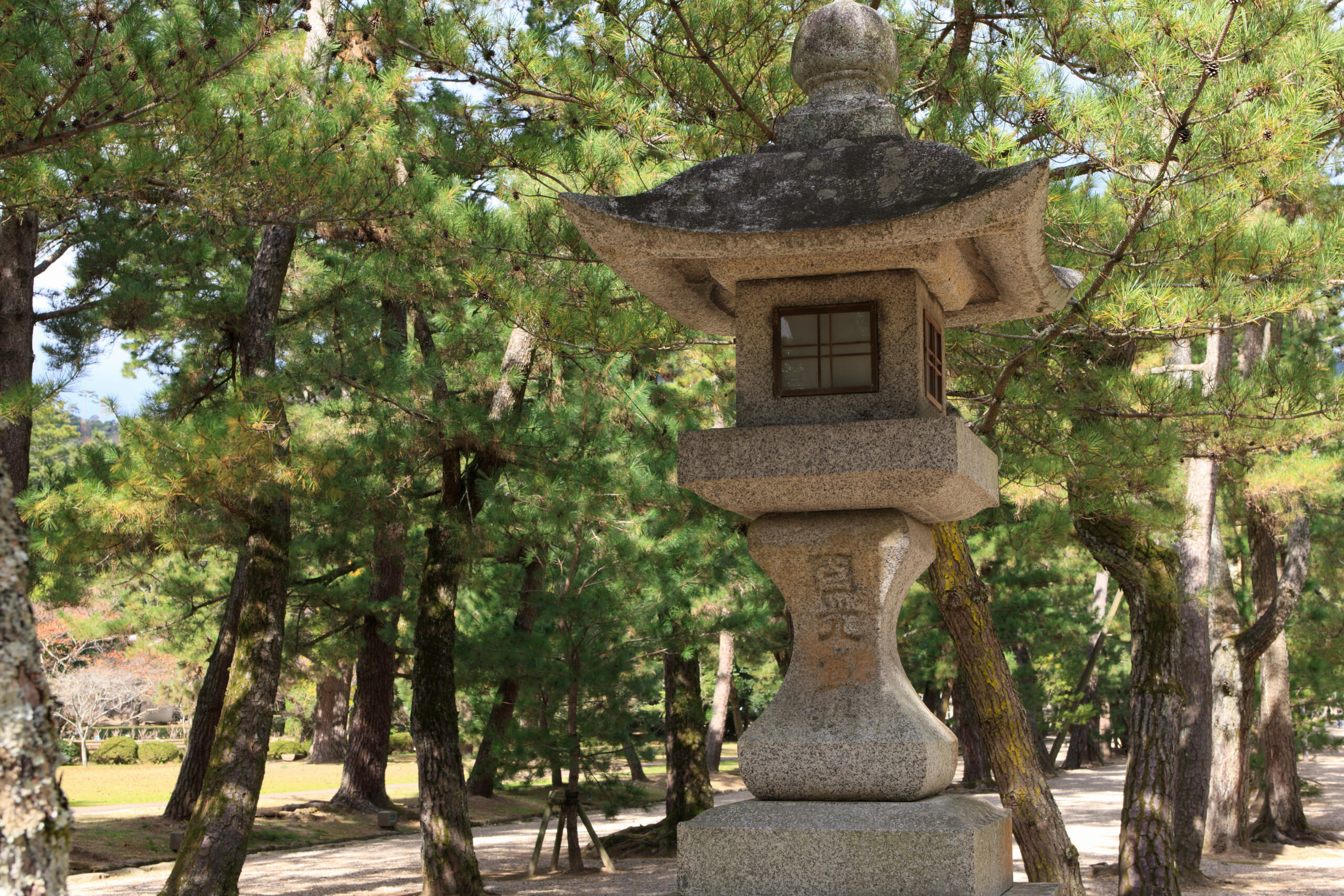
古墳文化から続く石造は、仏教が入ってくるとさらに発展しました。
おもな石工品は、日本庭園にみられる灯篭、手水鉢(ちょうずばち、神前や仏前で身を清めるために口をすすぐ水を入れる器)、石仏などの彫刻があります。
質の良い石の産地や、庭園文化や寺院などでの需要が高い土地を中心に伝統工芸品が作られています。
The stonework from the Tumulus period grew further when Buddhism entered. The main products are sculptures such as lanterns found in Japanese gardens, hand-water bowls (chozubachi, containers for rinsing their mouths to cleanse themselves in shrine or temple), stone Buddhas, and so on. These traditional crafts are produced mainly in high-quality stone production areas and in areas where garden culture and temples are in high demand.
| 真壁石灯篭 | Makabe Stone Lantern |
| 岡崎石工品 | Okazaki Stone Carving |
| 京石工芸品 | Kyoto Stone Carving |
| 出雲石灯ろう | Izumo stone lantern |
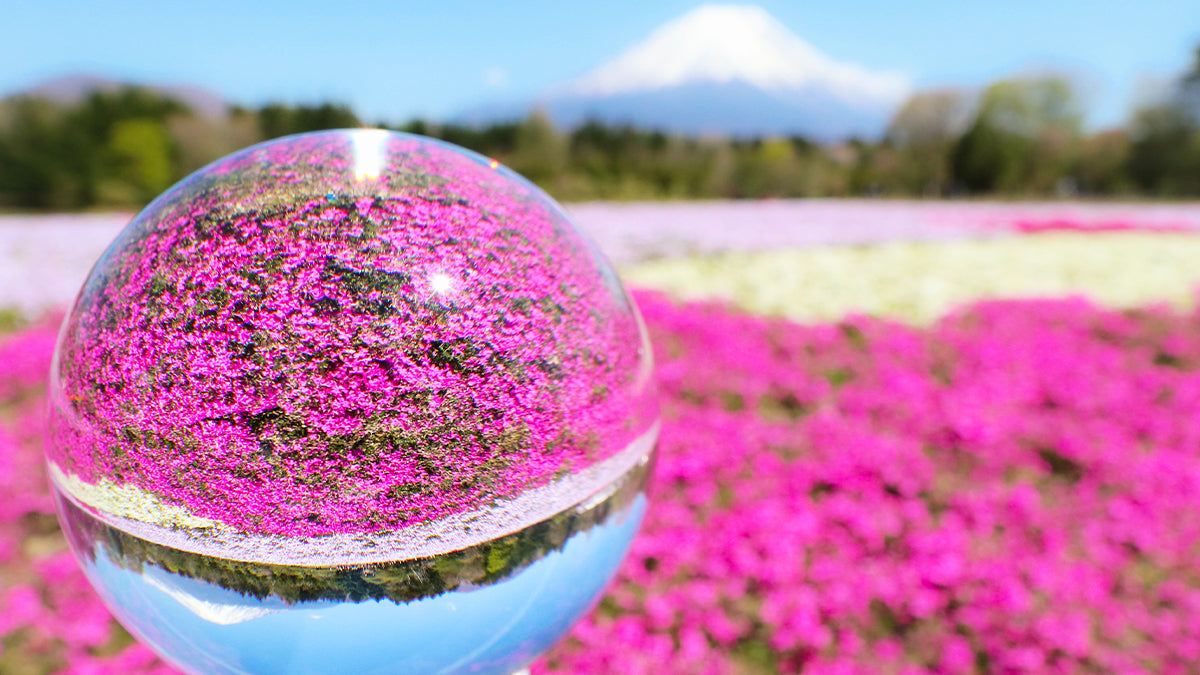
貴石細工とは、貴石(きせき、水晶・メノウ・ヒスイなど)を加工して作られたアクセサリーや置物などのことを指します。
戦国時代から水晶の細工加工が始まったといわれ、熟練された彫刻、研磨の技術を用いて原石を加工することで、貴石に秘められた美しさを引きだします。
Precious stonework is accessories and figurines made by processing precious stones (kiseki: crystal, agate, jade, etc.). It is said that quartz processing began in the Warring States period. By processing ore using skilled sculpture and polishing techniques brings out the beauty of the stones.
| 甲州水晶貴石細工 | Koshu Crystal Carving |
| 若狭めのう細工 | Wakasa Agate Work |
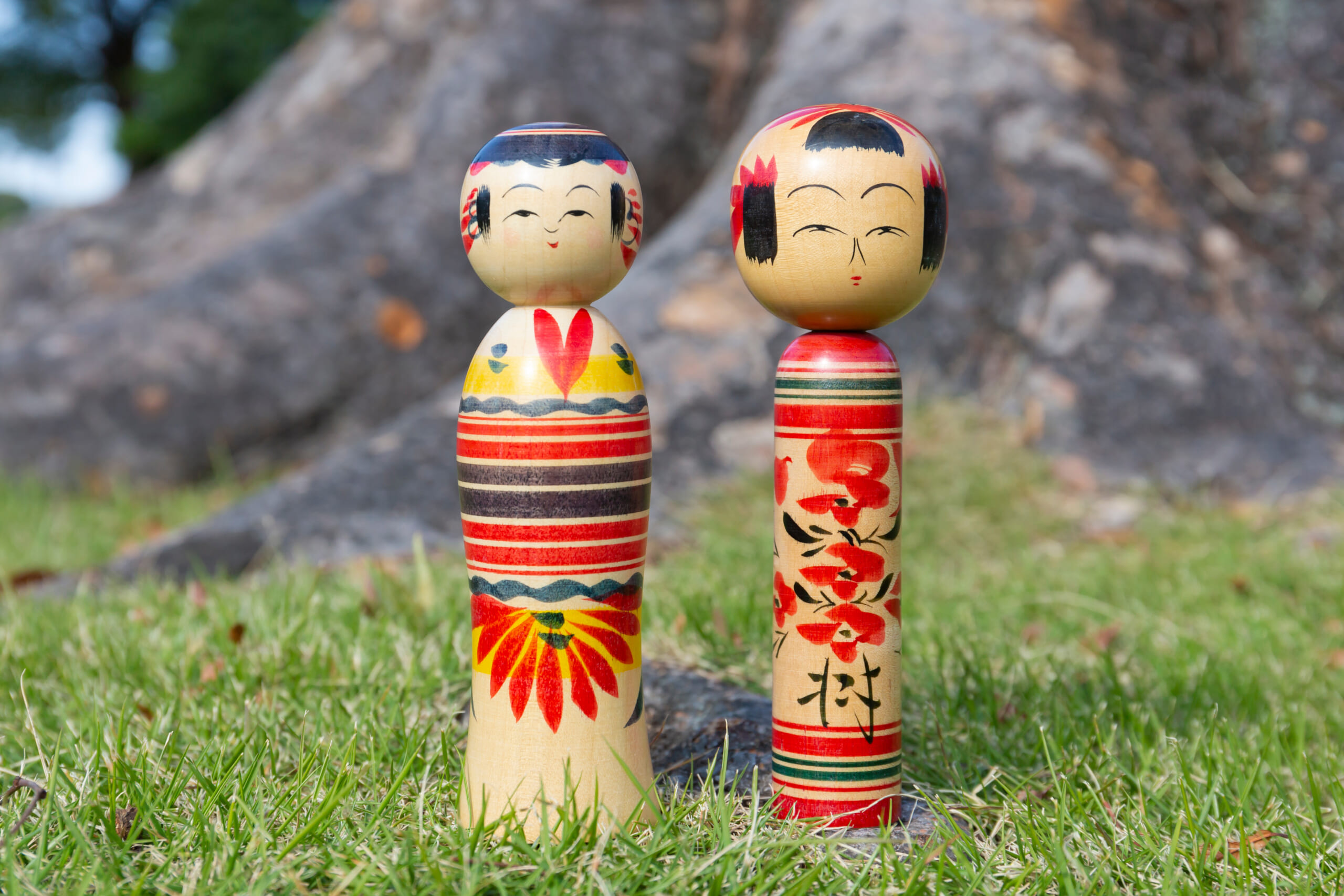
美しい着物の衣装をまとった日本人形は、古くは平安時代に始まるといわれ、江戸時代に入ると生産が盛んになりました。
3月3日の雛祭りで飾られる雛人形は、女の子の健やかな成長を願うための伝統行事に欠かせないものです。
「こけし」とは、木製の人形のおもちゃを指し、東北地方を中心に温泉客への土産物として作られたのが起源です。
現在では東北に限らず全国の観光地でもみられるようになりました。
The Japanese doll, dressed in beautiful kimono costumes, began to create in the Heian era, and its production flourished in the Edo period. One of the popular Japanese dolls is Hina dolls, which are displayed at the Hina Matsuri (Japanese traditional event on March third to wish for the healthy growth of girls).
“Kokeshi” refers to wooden doll toys that originated as souvenirs for hot spring customers mainly in the Tohoku region. Nowadays, it has been seen not only in Tohoku or hot springs but also in many sightseeing spots in Japan.

伝統工芸品作りに欠かせない工芸材料・用具。
鍛錬された職人の技術を用いて作り出される伝統工芸品は、質の高い材料・用具があってこそ生み出されるものです。
後継者、そして原材料が不足してきている近年では、伝統工芸を引き継いでもらおうと若者の育成に取り組んでいます。
Craft materials and tools that are essential for making traditional crafts. Trained craftsmanship to make traditional crafts requires high-quality materials and tools. In recent years, there has been a shortage of successors and raw materials, and efforts have been made to foster young people who will preserve the traditional crafts industry.
| 宮城伝統こけし | Miyagi Kokeshi Dolls |
| 江戸木目込人形 | Edo Kimekomi doll |
| 岩槻人形 | Iwatsuki Ningyo |
| 江戸節句人形 | Edo Sekku Ningyo |
| 駿河雛具 | Suruga Hina Doll Fittings |
| 駿河雛人形 | Suruga Hina Ningyo |
| 京人形 | Kyoto Art Dolls |
| 博多人形 | Hakata Art Dolls |

ガラス工芸品の総称を硝子細工と呼びます。
その起源は弥生時代にさかのぼるともいわれており、伝統工芸品のなかでも長い歴史をもっています。
製作方法はホットワーク、コールドワークの2種類の技法に分かれており、現在ではモダンなデザインを取り入れたものも人気を集めています。
Glass art is said that its origin dates back to the Yayoi period, and it has a long history among traditional crafts. The method of production is divided into two types of techniques: hot work and cold work. Traditional glass art crafts with modern designs are getting popular these days.
| 江戸硝子 | Edo glass |
| 江戸切子 | Edo Kiriko Cut Glass |
| 薩摩切子 | Satsuma Kiriko Cut Glass |
| 琉球ガラス | Ryukyu Glass |

手であおいで風をおこすための道具であるうちわ・扇子。
扇子は日本の伝統芸能である能や茶道などの儀式に使われるのが多いのに対し、うちわはおもに夏の季節に身分関係なく使われました。
その美しい絵画のようなデザインや繊細な色使いは、美術工芸品としても高く評価されています。
Round Japanese fan (Uchiwa) and folding Japanese fan (Sensu) are tools for blowing wind with hands. Sensu is often used for ceremonies such as Noh (Nou, traditional Japanese masked drama with dance and song, evolved from Shinto rites) and tea ceremony, while Uchiwa is used mainly in the summer season regardless of status. Its beautiful painting-like design and delicate colors are highly regarded as artistic handicrafts.
| 京うちわ | Kyoto Round Fans |
| 京扇子 | Kyoto Folding Fans |
| 丸亀うちわ | Marugame Round Fans |
| 房州うちわ | Boshu Rigid Fans |

提灯、灯篭はどちらも中に火をともすための日本の伝統的な照明器具です。
「提灯」は紙で囲われており、手に提げて持ち運びができるものや据え置き型のものがあります。
懐中電灯のような役目を果たしていましたが、いまでは祭礼用、装飾用の生産が主となっています。
「灯篭」は石や木で囲まれており、寺院や神社、日本庭園などで使われています。
Paper lanterns (Cho-chin) and stone lanterns (To-ro) are both traditional Japanese lighting fixtures.
Cho-chin is surrounded by paper, and there are ones that can be carried around by hand or those that are stationary. It used to function as a flashlight, but is now mainly used for festive and decorative purposes.
To-ro are made with stone or wood, and are used in temples, shrines, and Japanese gardens.
| 八女提灯 | Yame Lanterns |
| 岐阜提灯 | Gifu Lanterns |
| 山鹿灯篭 | Yamaga Toro |
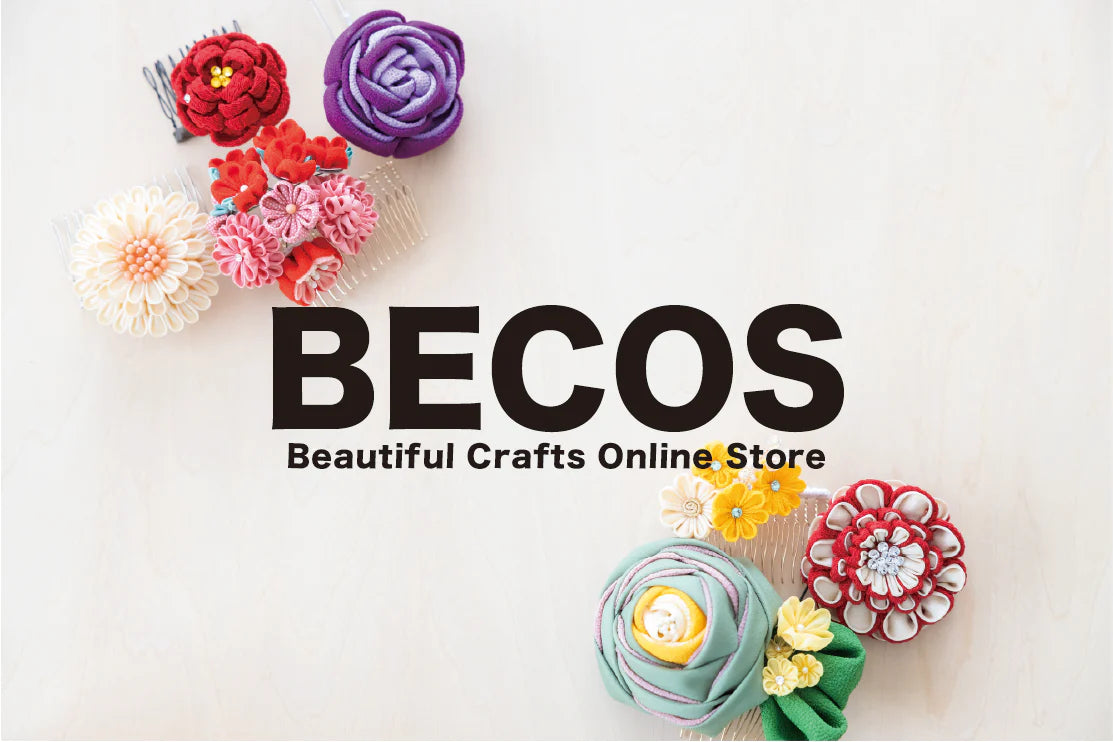
日本が好きな外国人に「これは何?」と聞かれた際に、しっかりと日本の伝統技術が使われている伝統工芸品だと説明していただける方が少しでも増えてもらえたら幸いです。
日本の伝統工芸品を発掘するのにぴったりなBECOSのECサイトは、海外の方に使っていただきやすい英語版をご用意しています。
全ての商品は、日本国内で職人によって手作りされており、上質なアイテムは暮らしをより豊かなものにしてくれますよ。
As a company, BECOS will help you explore and discover traditional Japanese crafted items. All items listed on our website are handmade and crafted by artisans right here in Japan.
You will find yourself delighted with the quality of our products and rest assured, our products will enrich your lifestyle needs.
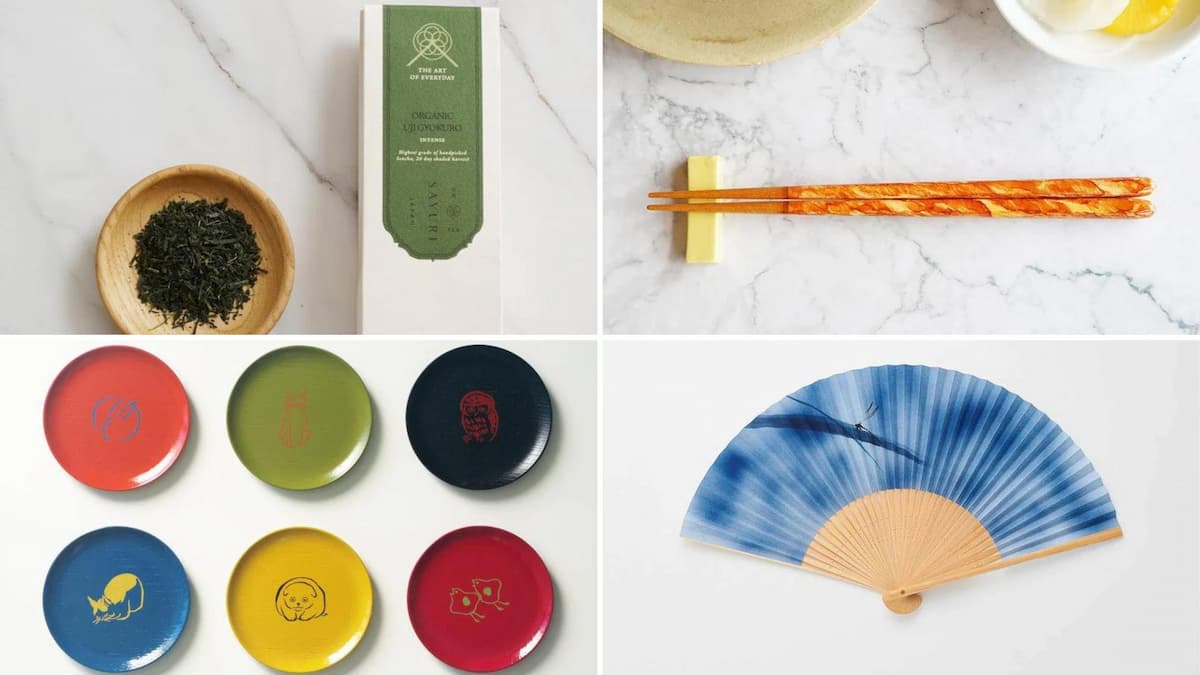
Our carefully selected products are Made-in-Japan and under ¥3,000.
For example, the line-up includes Arita Porcelain Mugs, Gyokuro tea leaves from Uji, and Wakasa lacquered husband-and-wife chopsticks sets for those interested in exploring products from BECOS.
1位

「彩-irodori-」バスタオル2枚 & フェイスタオル2枚セット。あらゆる贈答シーンに対応し、どのような方も思わず笑顔にさせる大満足の逸品です。
税込 16,500 円
★★★★★
(1レビュー)
4位

【牛刀】210mm 高炭素ステンレス鋼割込 磨きダマスカス 樫八角柄-柿渋仕上- | 堺刃物 | 。「縁起の良い贈り物」として包丁のプレゼントはおすすめです。
税込 24,750 円
★★★★★
(3レビュー)

\ BECOS編集部が厳選 /
伝統工芸品おすすめランキング発表
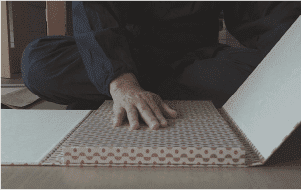
\ BECOS編集部が厳選 /
伝統工芸品おすすめ
ランキング発表
1位

「彩-irodori-」バスタオル2枚 & フェイスタオル2枚セット。あらゆる贈答シーンに対応し、どのような方も思わず笑顔にさせる大満足の逸品です。
税込 16,500 円
★★★★★
(1レビュー)
4位

【牛刀】210mm 高炭素ステンレス鋼割込 磨きダマスカス 樫八角柄-柿渋仕上- | 堺刃物 | 。「縁起の良い贈り物」として包丁のプレゼントはおすすめです。
税込 24,750 円
★★★★★
(3レビュー)

\ BECOS編集部が厳選 /
伝統工芸品おすすめランキング発表

\ BECOS編集部が厳選 /
伝統工芸品おすすめ
ランキング発表